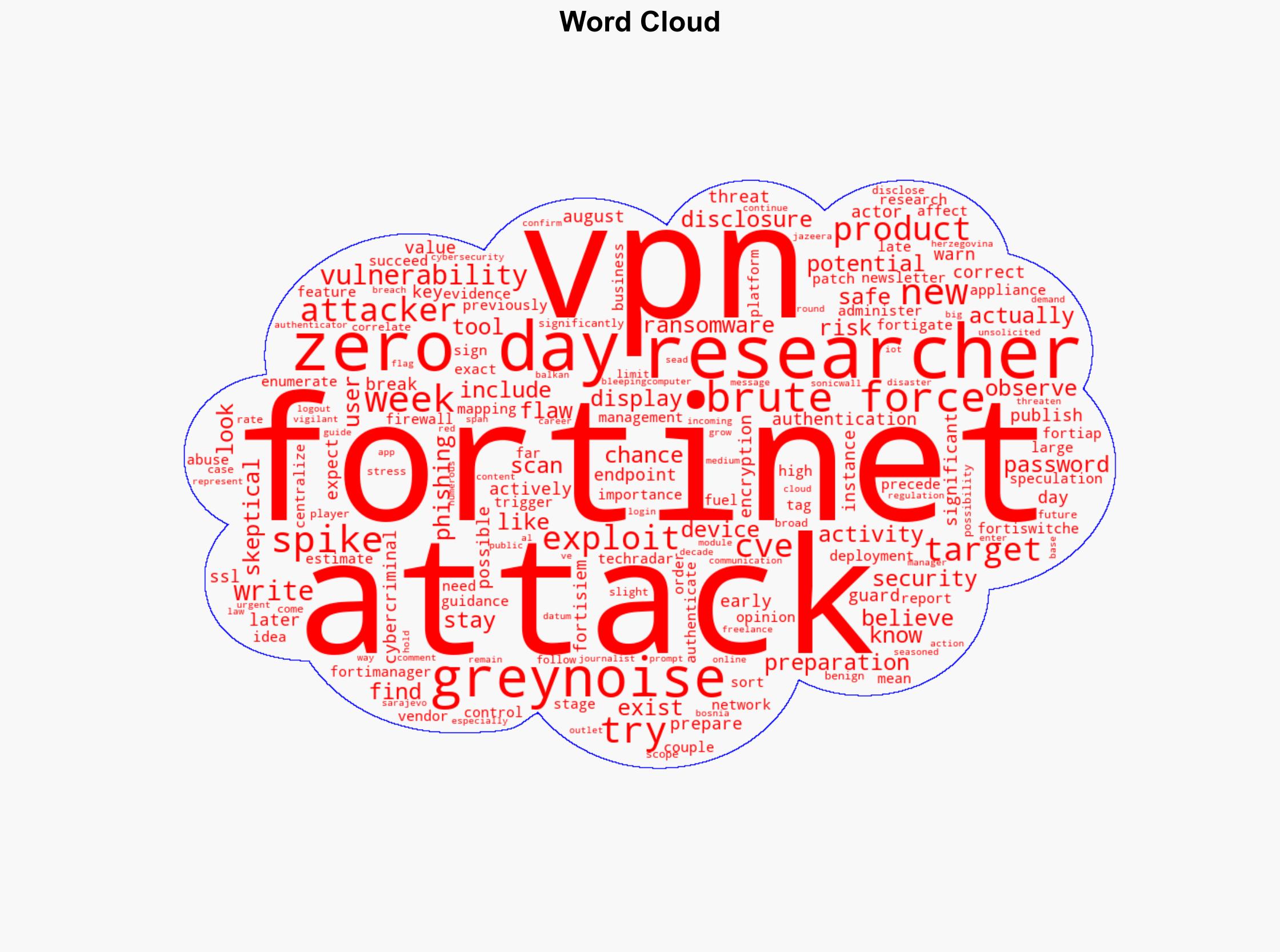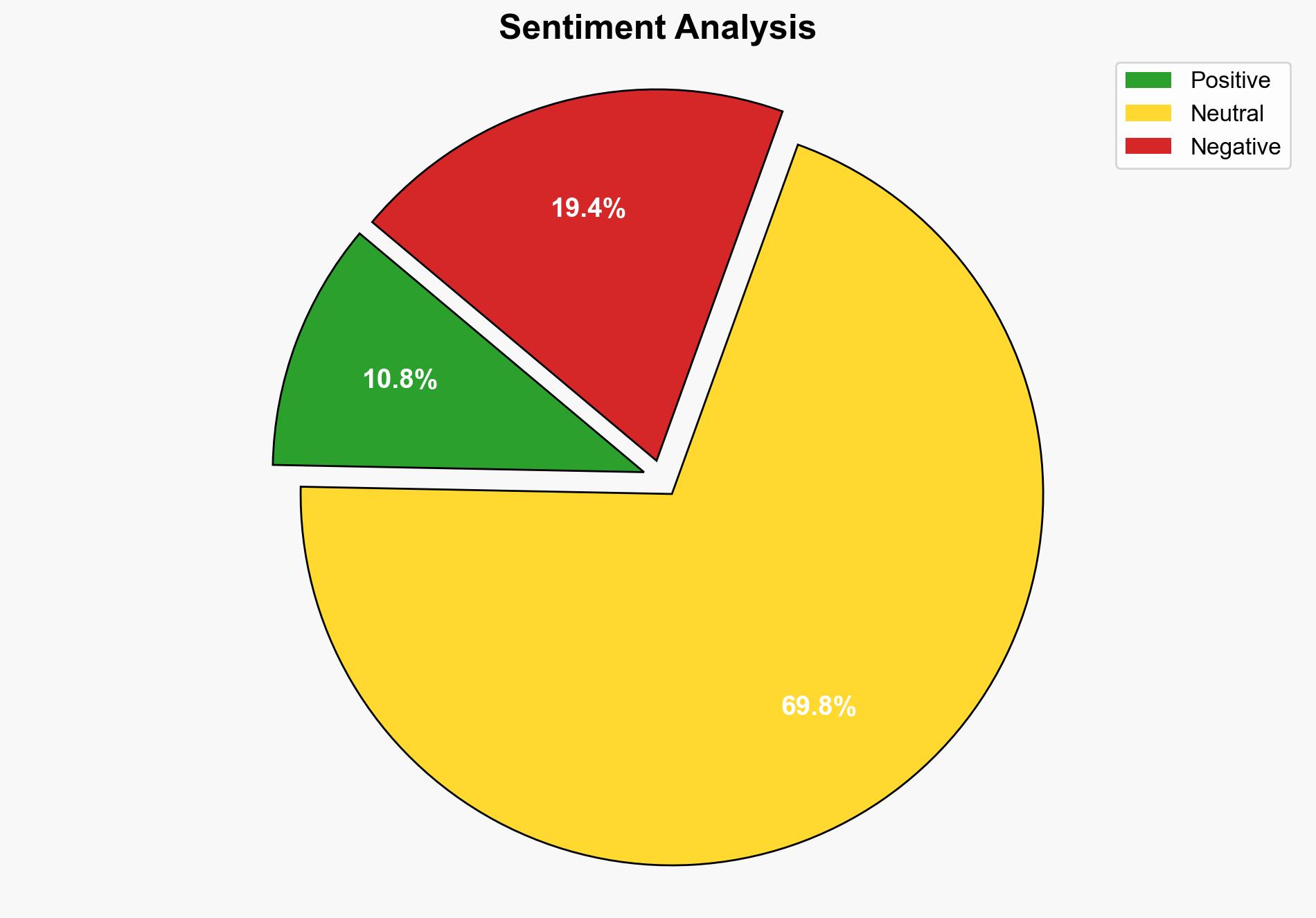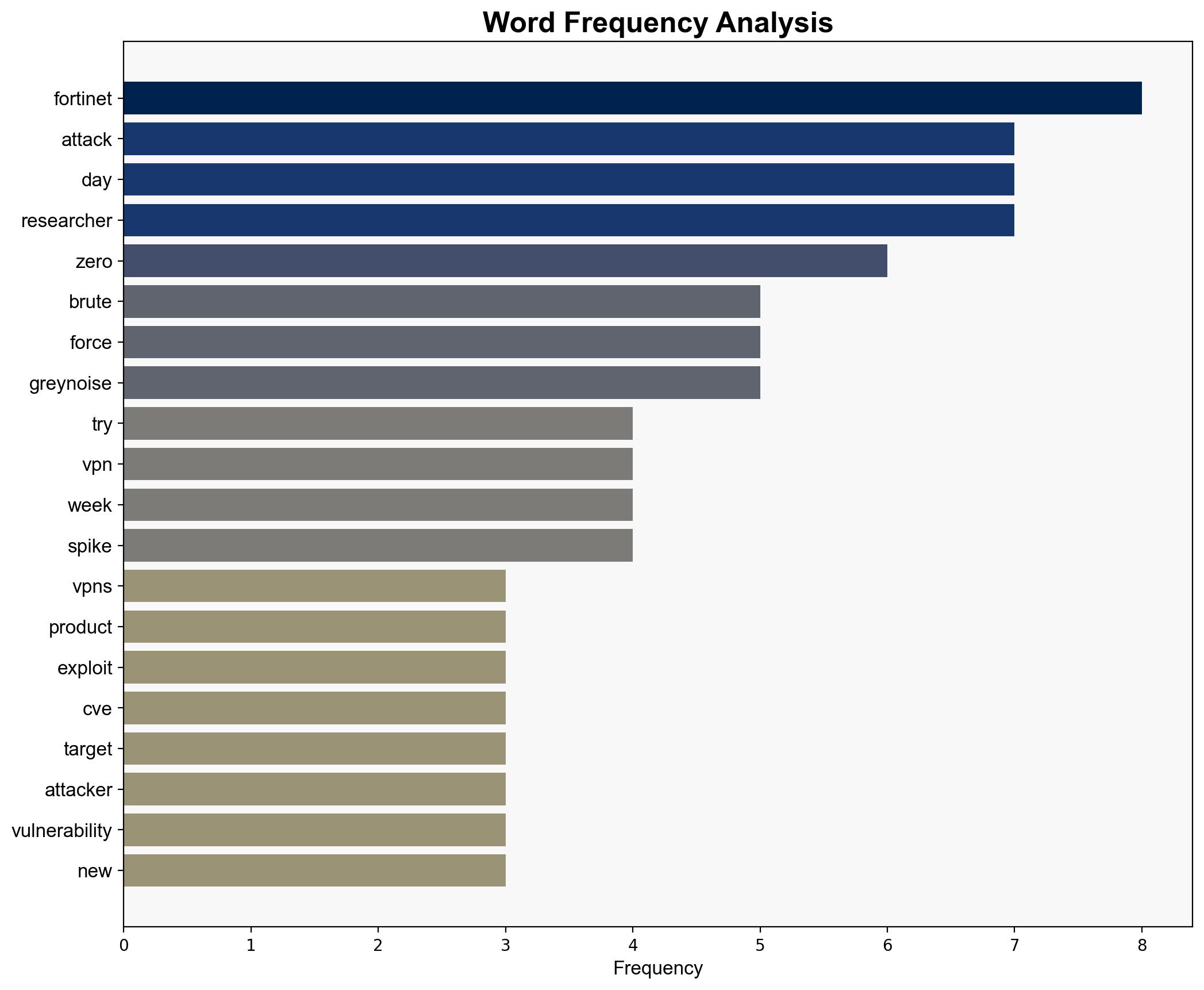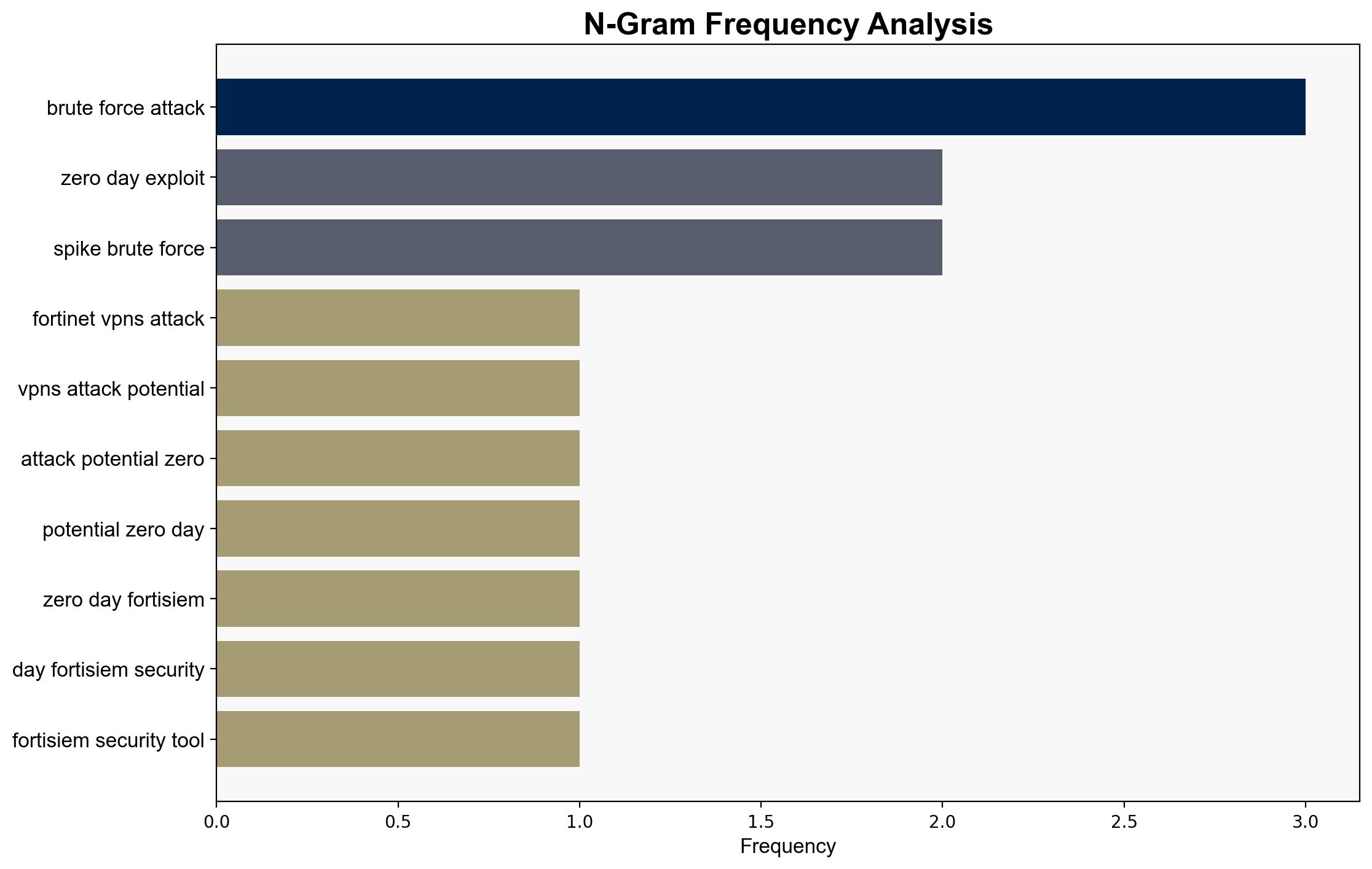Fortinet VPNs under attack from potential zero-day – FortiSIEM security tools also at risk so be on your guard – TechRadar
Published on: 2025-08-14
Intelligence Report: Fortinet VPNs under attack from potential zero-day – FortiSIEM security tools also at risk so be on your guard – TechRadar
1. BLUF (Bottom Line Up Front)
There is a moderate confidence level that Fortinet VPNs and FortiSIEM tools are under threat from a potential zero-day vulnerability. The most supported hypothesis is that cybercriminals are preparing to exploit a new, undisclosed vulnerability. Immediate action is recommended to enhance monitoring and apply any available patches to mitigate potential risks.
2. Competing Hypotheses
Hypothesis 1: Cybercriminals are preparing to exploit a new zero-day vulnerability in Fortinet products, as indicated by the spike in brute force attacks and historical patterns of such activity preceding vulnerability disclosures.
Hypothesis 2: The observed spike in brute force attacks is a result of cybercriminals attempting to exploit known, previously patched vulnerabilities, rather than a new zero-day.
Using the Analysis of Competing Hypotheses (ACH) 2.0, Hypothesis 1 is better supported due to the correlation between observed attack patterns and subsequent vulnerability disclosures, as noted by researchers. However, the absence of concrete evidence of a zero-day keeps Hypothesis 2 plausible.
3. Key Assumptions and Red Flags
– Assumption: The spike in brute force attacks is directly related to a zero-day vulnerability.
– Red Flag: Lack of direct evidence confirming the existence of a zero-day vulnerability.
– Potential Cognitive Bias: Confirmation bias may lead analysts to overemphasize patterns that align with previous zero-day disclosures.
– Inconsistent Data: The possibility that benign entities are conducting scans, as suggested by some researchers, introduces uncertainty.
4. Implications and Strategic Risks
If a zero-day vulnerability is confirmed, it could lead to widespread exploitation of Fortinet products, impacting numerous organizations globally. This could result in significant economic losses, reputational damage, and increased geopolitical tensions if state actors are involved. The psychological impact on users and organizations could lead to decreased trust in cybersecurity solutions.
5. Recommendations and Outlook
- Enhance network monitoring and deploy intrusion detection systems to identify and mitigate potential threats.
- Encourage Fortinet users to apply any available patches and follow best practices for cybersecurity hygiene.
- Scenario-based projections:
- Best Case: The spike in attacks is benign or related to known vulnerabilities, and no zero-day is discovered.
- Worst Case: A zero-day is exploited, leading to large-scale breaches and significant disruption.
- Most Likely: Increased attacks continue, but proactive measures mitigate major impacts until a patch is released.
6. Key Individuals and Entities
– GreyNoise: Research entity observing and reporting on attack patterns.
– TechRadar: Source of the initial report on the potential zero-day vulnerability.
7. Thematic Tags
national security threats, cybersecurity, counter-terrorism, regional focus





